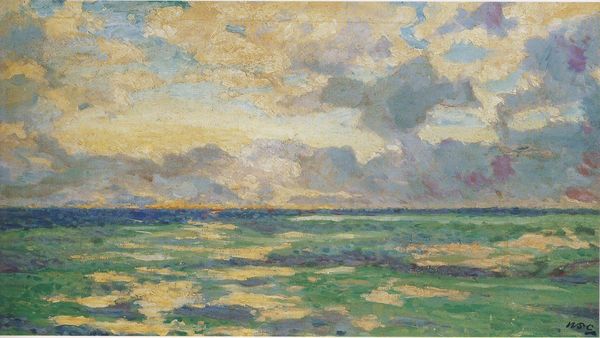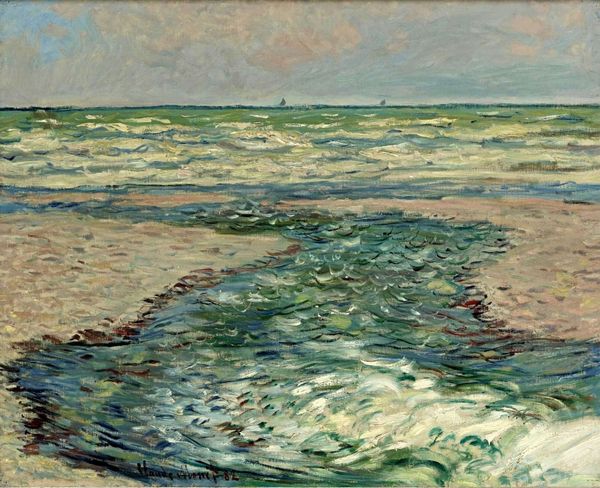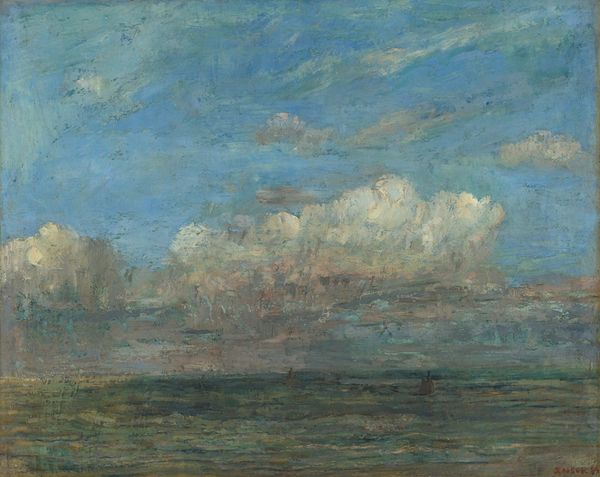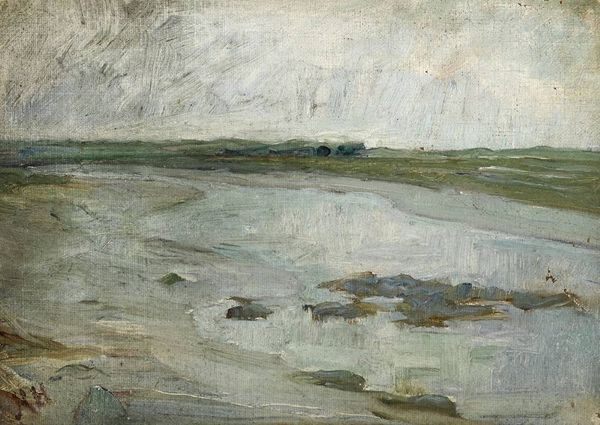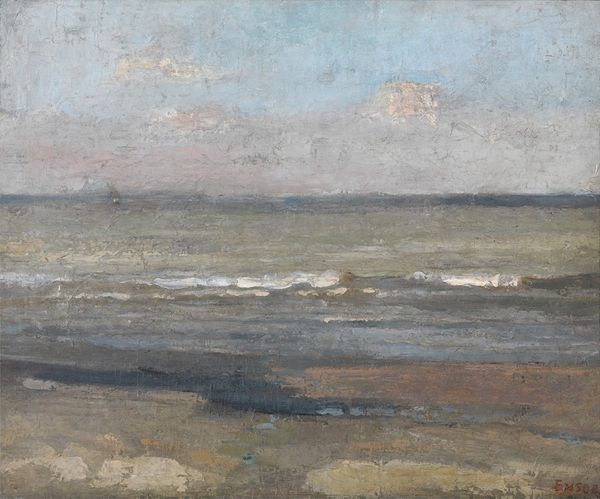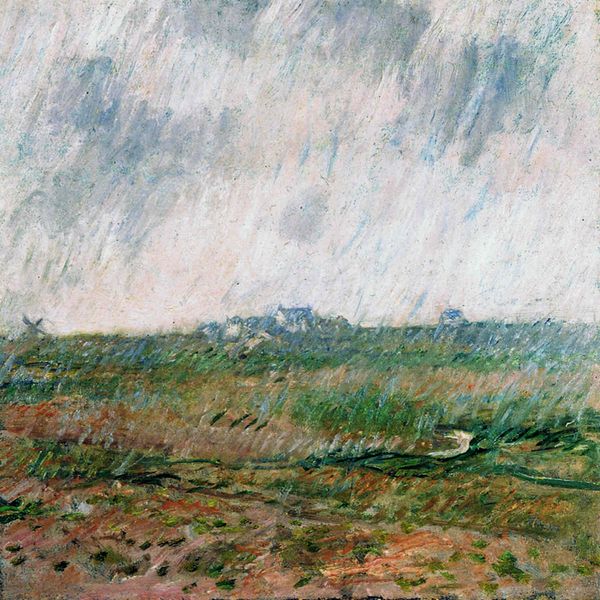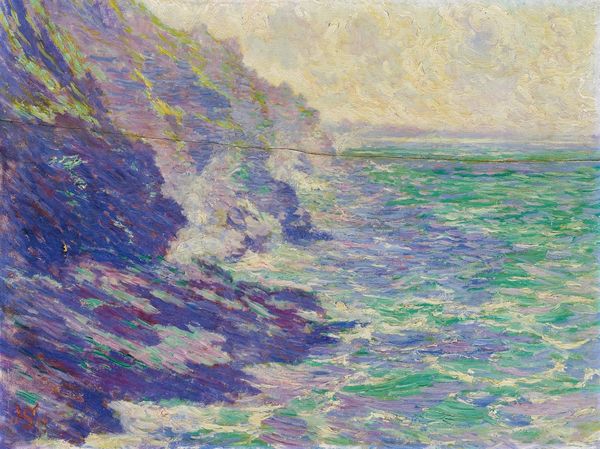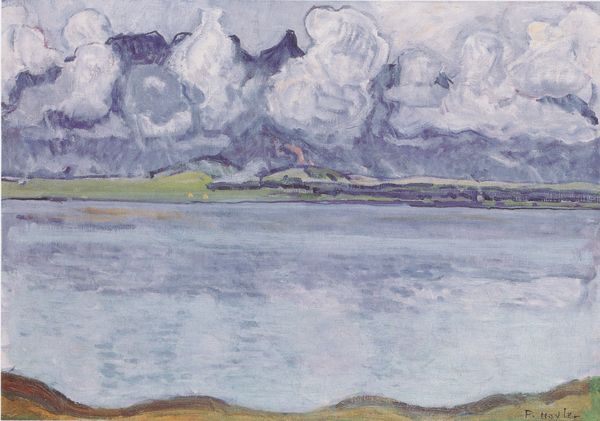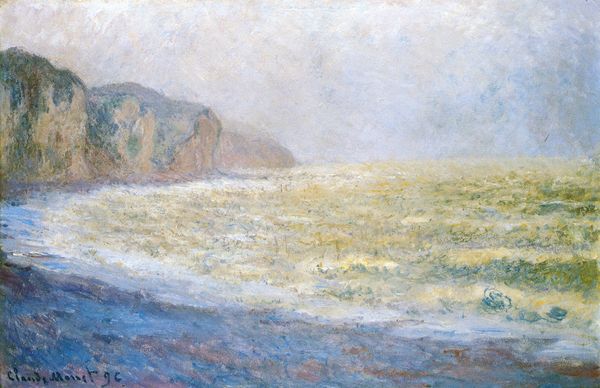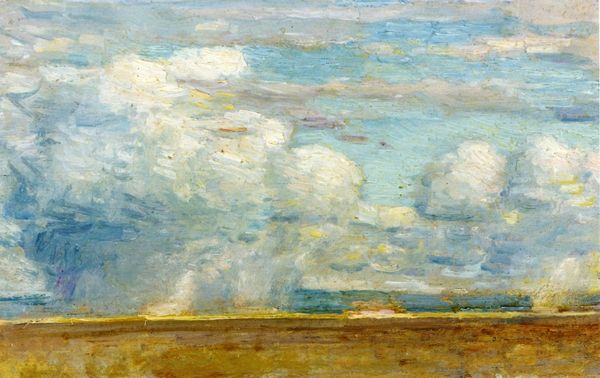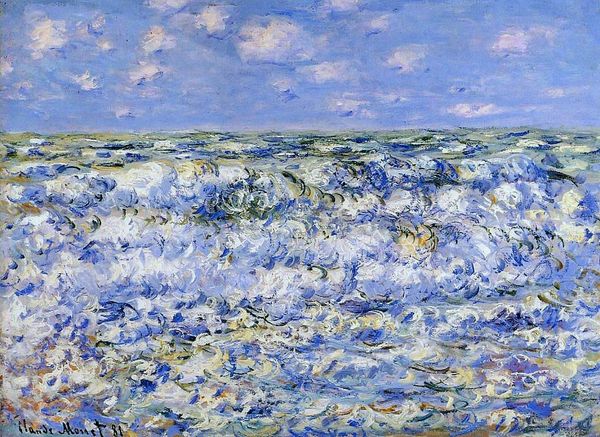
painting, plein-air, oil-paint
#
painting
#
impressionism
#
plein-air
#
oil-paint
#
landscape
#
watercolor
#
realism
Dimensions: height 74.7 cm, width 65.9 cm
Copyright: Rijks Museum: Open Domain
Curator: This is Jan Toorop’s “The Sea,” painted in 1887. Toorop, of course, was a leading figure in the Dutch Symbolist movement. Editor: My first thought is that it is such a melancholic view! The painting presents a somewhat unsettling depiction through its almost monochromatic palette and horizontal composition. The ocean dominates everything. Curator: Interesting! What's striking is that this seascape diverges quite notably from prevailing artistic conventions. Traditional seascapes usually served as stages for narratives of maritime power, or dramatic struggles against the elements. Think of the Dutch Golden Age masterpieces. This work shuns such heroic tales. Editor: Precisely. Notice the thick impasto; this almost aggressive application of paint suggests the raw, untamed character of nature. Curator: Well, in terms of his milieu, we should also consider the rise of the middle class, and the increasing accessibility of leisure travel in the late 19th century. Seascapes began to represent a more personal, contemplative experience of nature. Editor: A key element is how the surface seems almost abstract. Toorop is really pushing beyond strict representation; the painting captures more a sensory experience. He’s using the formal elements to evoke the feeling of the sea. Curator: The impressionist technique really serves to democratize the scene. Everyone had access to these sites and their capacity to move people. Instead of grand stories of the elite, the masses become central. Editor: It's tempting to consider the symbolic aspects that Toorop would have picked up at that time. Perhaps the painting attempts to express an awareness of the ocean as something vast, ancient, unknowable. Curator: Whether interpreted as a social artifact of the era, or dissected through its elemental components, the seascape presents us with multiple interpretative layers. Editor: Indeed, "The Sea" gives us pause. Its stark simplicity holds so much depth when you pause to observe and contemplate it.
Comments
rijksmuseum about 2 years ago
⋮
Jan Toorop made this seascape in Katwijk, where he was living in 1887. It is painted partly with a paintbrush and partly with a palette knife, as can be seen in the flat strokes. Through this technique, he succeeded in suggesting the effect of the waves breaking on the seashore in a realistic, almost tangible way. But if you look more closely, you can see a fantastic medley of colours.
Join the conversation
Join millions of artists and users on Artera today and experience the ultimate creative platform.
